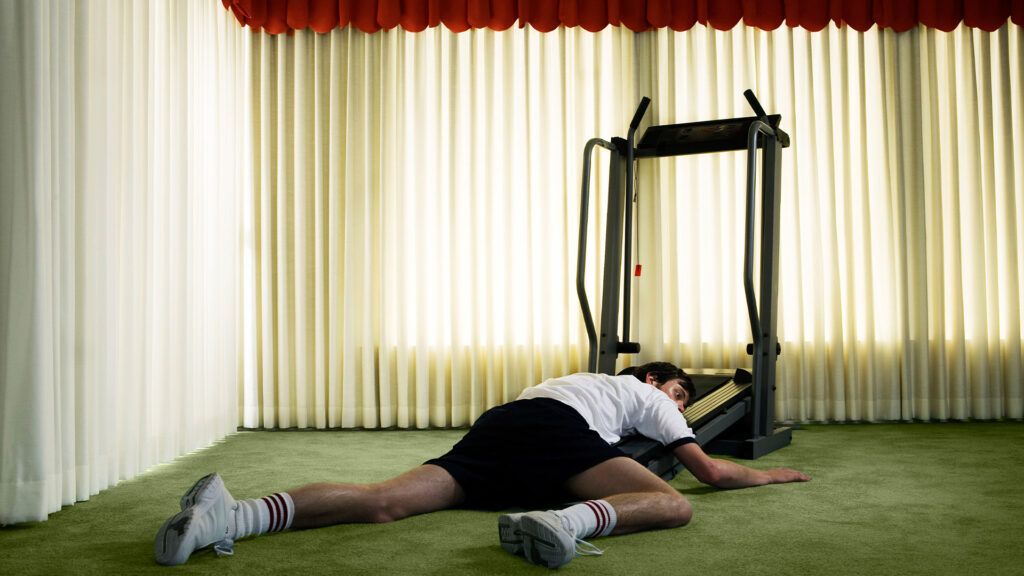Working out after drinking alcohol can decrease a person’s physical performance. It may also raise their risk of dangerous conditions.
According to the National Institute on Alcohol Abuse and Alcoholism (NIAAA), nearly
The Centers for Disease Control and Prevention (CDC)
Drinking alcohol can affect a person’s body during exercise and make their exercise performance worse. It can also decrease a person’s overall fitness.
This article discusses what happens to a person’s body after drinking alcohol, and the risks of drinking and exercising. It also discusses how to avoid the downsides of working out after drinking alcohol.

After a person drinks alcohol, it affects the way their body converts food and drink into energy. This process is called metabolism, which is the breakdown of nutrients from food into energy. Some nutrients, such as carbohydrates, are broken down into glucose, the main source of energy for the body. People commonly refer to the level of glucose in the blood as “blood sugar levels.”
Insulin is a hormone that helps a person’s body manage their blood sugar levels. Drinking alcohol causes a person’s body to produce more insulin.
Increased insulin can lead to lower levels of blood sugar. A person needs normal blood sugar levels when exercising. If they are working out after drinking, their low blood sugar levels decrease their performance and increase fatigue.
Drinking alcohol also slows down the nerves that pass messages around a person’s body. This causes a relaxed feeling that takes time to wear off. It worsens a person’s:
- motor skills
- balance
- accuracy
- judgement
- hand to eye coordination
- reaction times
These effects can negatively impact a person’s performance during exercise or competitions. They also increase a person’s risk of injury.
There are several risks to drinking alcohol and exercising, including:
Dehydration
Drinking alcohol makes a person more likely to become dehydrated during exercise. This is because alcohol is a diuretic, meaning it reduces the amount of water a person’s kidneys can reabsorb back into the bloodstream, causing them to urinate more frequently.
A person’s body temperature rises as they begin to exercise, and they begin to sweat. The combined sweating and alcohol’s diuretic effect makes dehydration worse if a person works out after drinking.
Dehydration can affect blood flow through a person’s body. Blood flow is essential for oxygen and nutrients to reach people’s muscles and organs. This effect causes a person to have reduced exercise performance.
Exercise-associated collapse (EAC)
Drinking alcohol before exercising
However, people taking part in competitive team sports or other exercises of varying intensity can have EAC as well. People with EAC collapse and feel faint or dizzy after exercising. There are several risk factors for EAC, including alcohol consumption.
Other names for EAC are exercise-associated postural hypotension (EAPH), or heat syncope.
Abnormal heart rhythms
Drinking before working out can increase a person’s risk of unusual or sometimes dangerous heart rhythms. The risk varies from person to person. However, it can significantly increase during exercise for up to two days after heavy drinking.
During exercise, a person’s heart rate increases. If they have significant quantities of alcohol in their system, their heart may be under extra stress.
People may be able to avoid the downsides of drinking alcohol when working out by:
- Eating a suitable meal before or during drinking: Eating slows down a person’s drinking pace and fills them up, helping them to drink less.
- Waiting for the body to eliminate alcohol: People may wait until alcohol has left their system. A person’s body eliminates alcohol at about one drink per hour. However, this rate varies with a person’s size, sex, and some body factors. It also varies with the type of alcohol a person drank, and how much food they have eaten.
- Eating after exercise: Eating food rich in carbohydrates after exercise allows a person to replenish their muscles’ fuel stores.
- Hydrating: Drinking water whilst drinking alcohol can help avoid dehydration when later exercising. People can also help avoid dehydration after consuming alcohol by drinking water before sleeping.
- Shorter or less intense workouts: Shorter or less intense workouts after drinking may limit the stress effects of alcohol during exercise.
Frequently asked questions about drinking and exercising include:
How long to wait to exercise after drinking alcohol?
To avoid health risks and affected performance, it may be best for people to wait at least a day, or sleep it off overnight after drinking alcohol.
Is it OK to work out the day after drinking?
If people work out the day after drinking, they may have reduced exercise quality or performance, and be more at risk of abnormal or sometimes dangerous heart rhythms, for up to two days after heavy drinking.
Should a person work out if they drank alcohol?
People get the best results from exercising when avoiding or moderating their alcohol intake the night before. Drinking alcohol may mean a person loses the positive effects of exercise.
Is it better to drink alcohol before or after a workout?
Drinking alcohol both before and after working out can make dehydration worse. Drinking directly after exercise can be inadvisable if a person has not replaced fluids lost through sweating.
Drinking alcohol after working out also prevents a person’s muscles healing efficiently.
Drinking alcohol before working out can reduce a person’s physical performance, abilities, and reactions. It can also make them dehydrated, and more likely to have EAC or develop potentially dangerous heart rhythms. Alcohol may also stop a person’s muscles healing properly.
People can avoid the downsides of drinking alcohol before working out in several ways, or not drinking it before working out.
